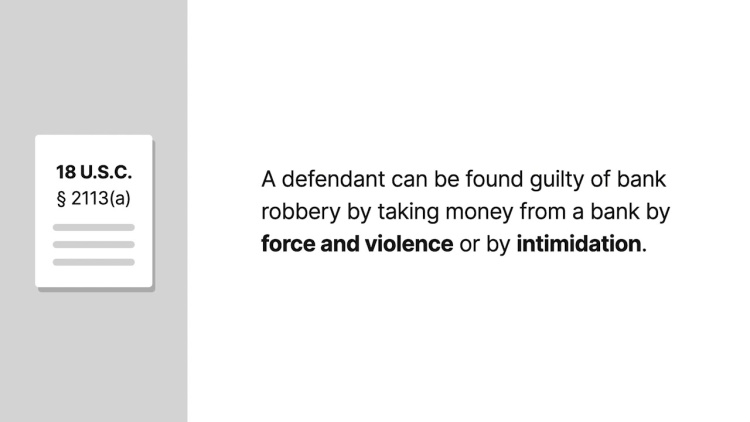Carter v. United States
United States Supreme Court
530 U.S. 255 (2000)
- Written by Walter Machniki, JD
Facts
In 1997, Carter (defendant) ran into a bank in New Jersey, jumped behind the customer service desks, and stole $16,000 from the different cash drawers. Carter was charged with federal bank robbery under section 2113, subsection (a) of the United States Code, which required a taking by force or intimidation. Carter claimed that he did not take the money by force or intimidation as required by the subsection of the statute under which he was charged, and before the trial in the district court, asked that the jury be instructed on a “lesser included offense.” The “lesser included offense” was subsection (b) of section 2113, or federal bank larceny. The district court denied Carter’s motion, and Carter was convicted of federal bank robbery. The jury was only instructed to consider whether Carter had violated subsection (a). Carter appealed, claiming that the jury should have been instructed to consider subsection (b) of the statute as well because it was a “lesser included offense.” The court of appeals affirmed the district court’s ruling. The United States Supreme Court granted certiorari.
Rule of Law
Issue
Holding and Reasoning (Thomas, J.)
Dissent (Ginsburg, J.)
What to do next…
Here's why 899,000 law students have relied on our case briefs:
- Written by law professors and practitioners, not other law students. 47,000 briefs, keyed to 994 casebooks. Top-notch customer support.
- The right amount of information, includes the facts, issues, rule of law, holding and reasoning, and any concurrences and dissents.
- Access in your classes, works on your mobile and tablet. Massive library of related video lessons and high quality multiple-choice questions.
- Easy to use, uniform format for every case brief. Written in plain English, not in legalese. Our briefs summarize and simplify; they don’t just repeat the court’s language.





